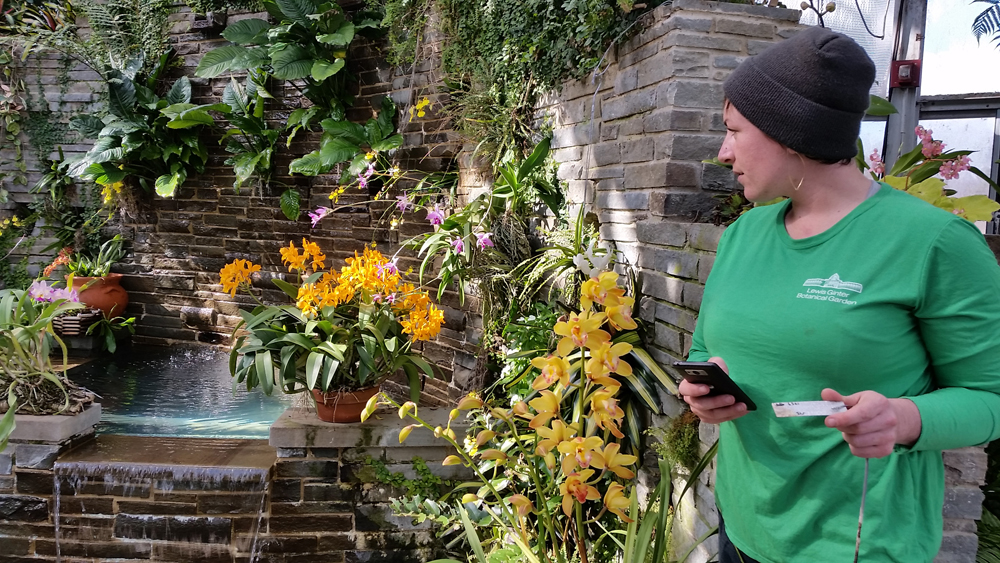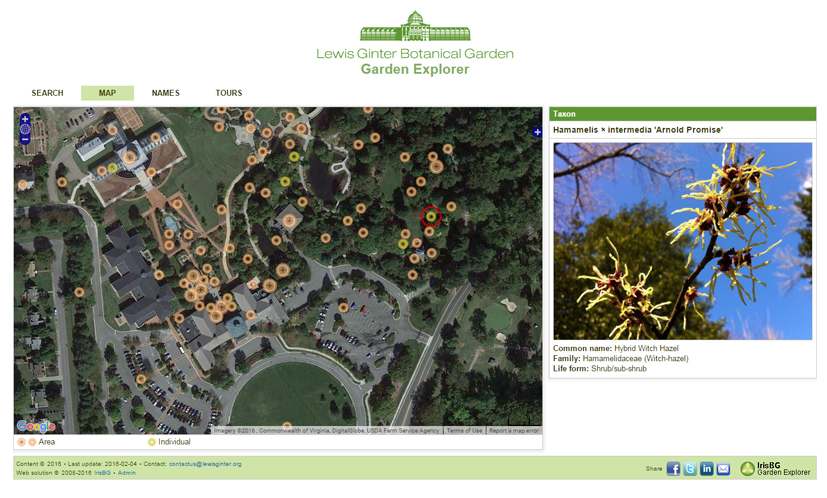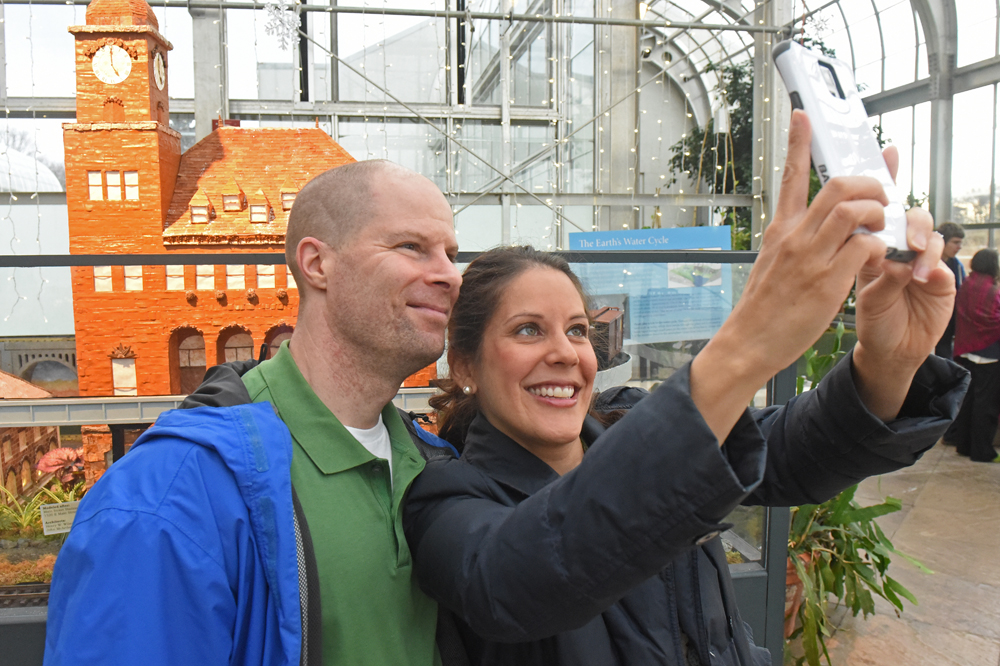Technology in the Garden

Chelsea Mahaffey, Conservatory horticulturist, updates the orchid inventory at Lewis Ginter Botanical Garden by accessing inventory-management software that records planting history, locations, conditions and more
Lewis Ginter Botanical Garden welcomed more than 386,000 visitors last year — plus many more who never left home. Virtual visitation continues to grow in remarkable ways, and along with it grows horticulture education and gardening interest. So rather than trying to keep nature separated from technology, we embrace the fusion.
Last summer we ramped up technology another notch by purchasing Garden Explorer: a web-based software program from the United Kingdom, that enables anyone with interest to logon and learn.
“Horticulture and information technology intersect through Garden Explorer,” said Grace Chapman Elton, the Garden’s director of horticulture. The program’s data-management system helps the horticulture staff keep more accurate records of new plantings and displays, update information on existing collections and map individual plants and gardens. Currently, only 75 public gardens worldwide use this inventory-management module.
By logging onto http://bit.ly/GardenExplorer, visitors—both on-site and on-line—can access select information about Lewis Ginter Botanical Garden’s plant collections. You can view lists of plants growing in particular planting beds and search for a plant by common name, scientific name and life form (i.e., tree or shrub). The Google satellite map also can pinpoint specific gardens and points of interest across our 50 developed acres, and the tool can be used on your home computer or on your smartphone to aid in exploring the Garden during your visit. Garden Explorer is expected to grow in prominence as a valuable online resource for students and those with mobility challenges, as well.

Garden Explorer uses a Google map to help visitors pinpoint their location and plan their tour of Lewis Ginter Botanical Garden. Orange dots indicate garden beds, and yellow dots indicate individual specimens that have corresponding photos, such as this witch hazel, Hamamelis × intermedia ‘Arnold Promise.’ The software program was made possible by a grant from the Stanley Smith Horticultural Trust in support of educational activities that promote ornamental horticulture.
“People are so glued to technology that it’s really hard to turn their attention to plants,” Elton said. “Garden Explorer adds another layer, another story, so we can reach and teach people about the plant world.”
What’s Next?
Enhancements to Garden Explorer are already in progress, including more self-guided virtual tours and adult education classes using Garden Explorer. In the near future, staff will upload more photos to help with plant identification, as well as plant origins and history.
“Over time, Garden Explorer will give localized growing information about our plants,” Elton said. “Visitors will see a plant, click on it (using their mobile device) and discover how it reacts to Richmond weather and growing conditions.” Eventually, the program will also show a plant as it would appear in another season.
When asked if virtual tours will someday replace actual visitation, Elton replied: “Garden Explorer gives just a taste of what visitors will discover when they come to our Garden…but technology will never replace the sensory experience of being outdoors in nature.”
Ask today’s gardeners about their most valued garden tools, and chances are on-line resources and apps are near the top of the list.
Once you try out Garden Explorer tool, we’d love to know what you think. Leave a comment and let us know if you used it from home, or on site, and how it helped you explore our garden.

Michael and Tania Koehler, along with a growing number of horticulturists and gardeners, electronically share their garden visits, gardening expertise and tips using Facebook, Instagram and more.